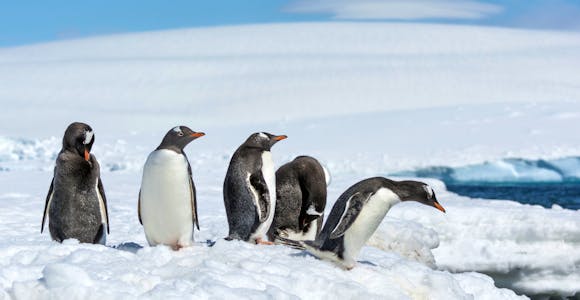
Antarctic Wildlife
Antarctica abounds in penguins, seals and whales, making it one of the most rewarding wildlife watching places on earth.
Discover MorePrice Match Promise-We’ll match any price you find elsewhere for the same trip

Antarctica is a true paradise for photographers. This is far more than a plain white continent: you'll be amazed at how many shades of blue an iceberg can contain and marvel at the array of wildlife you'll encounter. There’s so much to capture on an expedition cruise, the problem will be working out just where to point your lens.

For any Antarctic photography trip, when you travel is of paramount importance. The cruise season, which runs from November to March offers several choices: opt for high summer's warmth and busiest wildlife or embrace the extended golden hour sunsets and sunrises of the shoulder months.
For lovers of landscape photography, November is a hard month to beat. The sun still dips below the horizon for the chance of amazing sunsets, and the presence of the winter snow offers an amazing canvas ready to be painted with light. The light in March is equally wonderful, but while the snow is no longer quite so pristine, you'll find yourself in the height of whale watching season. Having spent the summer feeding, they're often curious around zodiacs and kayaks at this time, making for tremendous photos.
Antarctica's famously unpredictable weather may sometimes mean working with the weather for moody atmospheric shots. The high summer stretch from December to mid-February with its long days may bring fewer dramatic lighting opportunities but is conversely the peak time for wildlife photography, with busy penguin colonies and plenty of chicks plus lots of seal and whale sightings.
Is it possible to have both wildlife and light? If you have the time, consider including South Georgia on your itinerary: king penguin chicks are present all year round, while November brings breeding elephant seals and March offers up playful fur seal pups by the thousand.
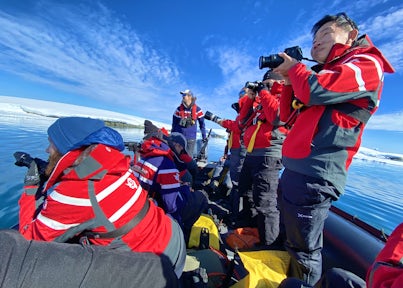
Any Antarctica cruise is going to offer you a spectacular array of wildlife and landscapes to point a camera at, but if you’re serious about your photography then choosing the right ship will go a long way to helping you capture that perfect shot. At Swoop, our inhouse photographer travels south on a shooting trip every year and our sales team knows the entire polar fleet inside – so we have the inside knowledge to help you get the most out of your trip.
One of the most important considerations for your trip is how much time you’ll spend off the ship. Larger ships can mean it takes longer to disembark or that landings can be shorter, so we recommend choosing a smaller ship.
The majority of ships will have a photographer as part of their expedition team who is there to help with advice and guidance. However, many ships also operate dedicated photography-led tours, with extra photography guides and excursions along with technical workshops and talks on board. These can be perfect for really maximising your experience as you’ll be travelling with plenty of fellow enthusiasts all with the same purpose in mind.
If you’re considering a fly-sail cruise and are bringing a lot of kit, be aware that flights to the Antarctic Peninsula have strict baggage limits of 15kg (33lbs) for checked bags and 5kg (11lbs) for carry-on. On some internal Argentinian flights to the cruise starting point at Ushuaia you may also have to pay extra for bags over this weight: our team can advise you of current baggage limits when booking.
Price Match Promise - We’ll match any price you find elsewhere for the same trip
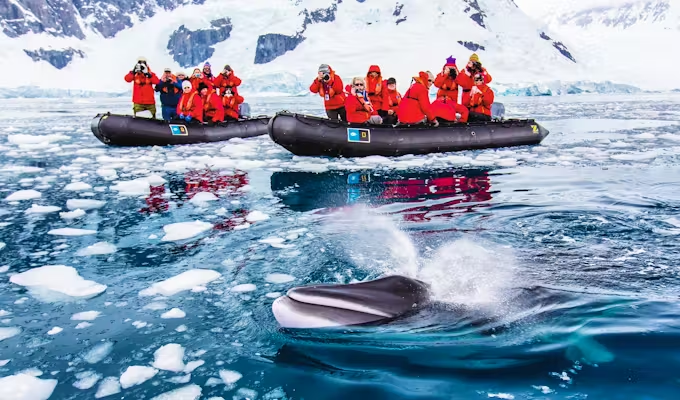
4.7 out of 5
Travelling aboard a state-of-the-art small ship and accompanied by unparalleled onboard expertise, expeditionary cruising doesn’t get much better. Regular departures throughout the season and a choice of two outstanding vessels renowned for their comfort, enhanced safety features and spirit of…
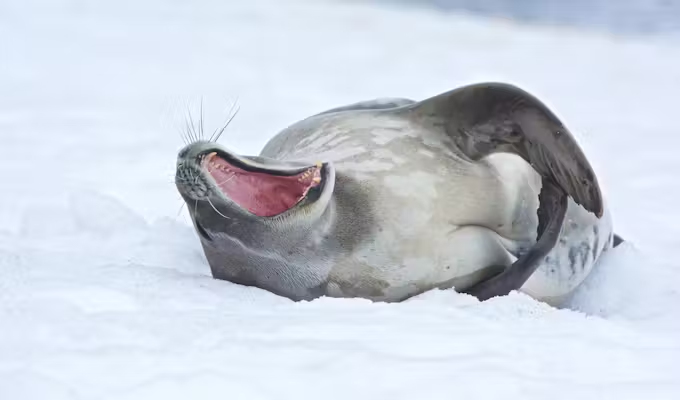
4.7 out of 5
By offering time saving flights, extended time in Antarctica and the chance to reach the Polar Circle, this 10-day voyage maximises the polar experience. Minimum travel time and maximum exploring time and all the benefits of only 76 people…
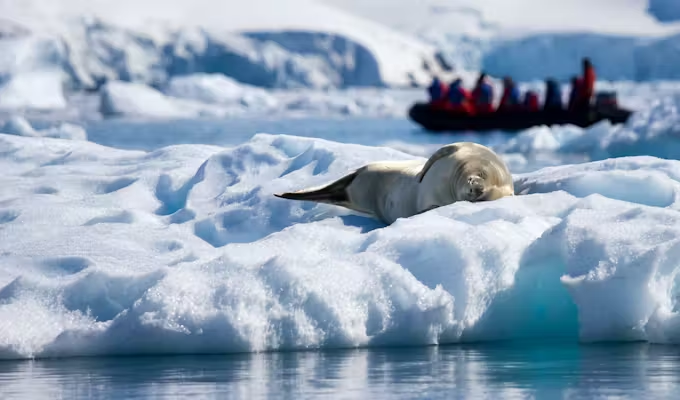
4.4 out of 5
Spend 6 full days exploring Antarctica with the Polar Circle at 66 degrees south as your most southerly objective, on board one of the most exciting new vessels. A maximum of just 130 passengers, with spacious cabins, state-of-the-art technology and…

4.6 out of 5
Explore the White Continent aboard one of the polar fleet's newest additions, a state-of-the-art expedition vessel combining adventure with comfort. As well as being limited to only 130 passengers, there’s a wide range of optional activities on this classic Antarctic…
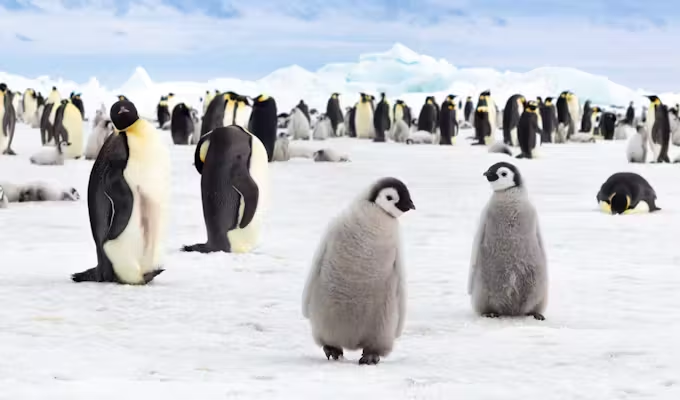
Maximise your time looking for Antarctica’s most iconic species, the emperor penguin, on this luxurious expedition to the remote Weddell Sea. If conditions allow, two sleek twin engine helicopters will fly you over vast tabular icebergs to Snow Hill Island,…
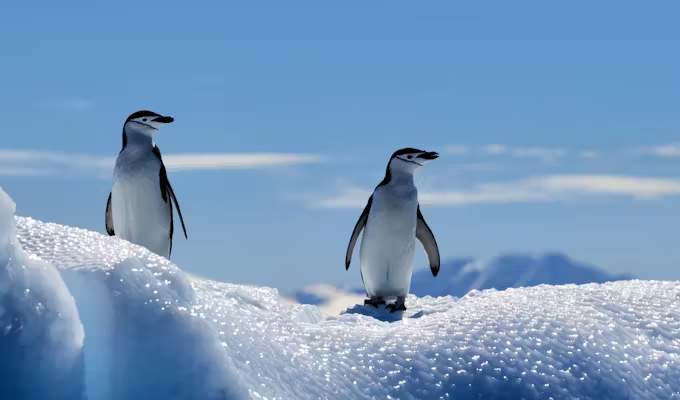
4.6 out of 5
With a good choice of departure dates through the season across three medium-sized ships, this 19-22 day trip stands out for its value for money and the broad range of cabin categories available, including Quads, which are…
We’ll match any price you find elsewhere for the same trip and you get these Swoop inclusions at no extra cost.
Harness our 400,000 hours of Antarctic experience. There’s no question we can’t answer.
Expert advice on over 1500 voyages to help you discover your perfect trip - and we don’t charge a fee.
We care deeply about protecting Antarctica, that’s why 1% of our revenue goes to conservation.
Access our exclusive pre-travel webinars — one of the many ways we make sure you’re Antarctica’s best-prepared travellers.

Keen photographers will already have much of their gear to hand, but polar conditions require a few extra considerations when drawing up your packing list. Besides, what better excuse to treat yourself to some new kit than taking a once in a lifetime Antarctica cruise?
Serious photographers should consider bringing two camera bodies with them to avoid continually swapping lenses in often harsh weather. From experience, we recommend bringing a wide-angle lens for landscape photography and a zoom for wildlife close ups. In general you likely won’t need anything over 200mm as you’ll be close to the wildlife, but a longer lens can be handy for long distance shots of whales or albatrosses off the ship.
Bring a waterproof bag or dry pack to protect your camera as you’ll invariably get wet on zodiac trips, as well as making sure your cameras have good straps for when you’re carrying them. Leave your tripod at home though. You won’t miss it; it just gets in the way and you’ll most be shooting at fast speeds because of the light anyway. As for tackling that light, bright snow makes a polarising filter essential and a graduated ND filter highly recommended.
Don’t forget the accessories. Bring plenty of spare batteries and keep them inside your coat so they stay warm in frozen air. You’ll take more photos than you’ll even anticipate so extra memory cards are a must, especially ones that write fast when you’re trying to capture animals on the move. Bring a hard drive or two to back things up: going through the day’s shots on your laptop in the ship lounge is also a great icebreaker for meeting fellow photographers.


Antarctica in November





King penguins on the beach at St Andrews Bay


A penguin rookery on the Antarctic Peninsula
Advice? Bring a small cover for your camera body and a lens hood for the rain. Read the full review
Travelled: March 2025
Cal Thiesing - USA
Bring proper gloves if you love taking photos so that you’re able to use your cell phone without taking them off. Read the full review
Travelled: February 2025
Christine Roberts - USA
I was definitely glad I brought my big camera with the telephoto lens instead of just relying on our phones for pictures (though the phones did take some great shots) – the telephoto is so useful for zooming in on the animals.
Travelled: February 2025
Katherine McCallie - USA
Thin merino wool liner gloves were my favorite item I packed. I never wanted to keep my big snow gloves on because I was constantly taking pictures. Read the full review
Travelled: February 2025
Whitney Lauren Sherman - USA
Advice? Bring the best camera you have! Read the full review
Travelled: January 2025
Caryn Lombardi - USA
Tips? Bring a lanyard for your phone to take pictures. Read the full review
Travelled: January 2025
Gerri Gorlich - USA
The splendour of the scenery in Antarctica and the enormous amount of wildlife on South Georgia was still breathtaking and even more impressive than any photo could ever convey. I left Antarctica, especially, disappointed in the quality of my photos - they completely fail to convey the scale and grandeur of the place and I'm pretty sure that's not just a reflection of my photography skills. Read the full review
Travelled: December 2024
Drew Wilson - USA
I would recommend no greater zoom than 130mm and have a camera body itself that could do the highest possible pixel count. Because you're on a moving ship you're never steady and your wildlife is also very dynamic and not static.
Travelled: December 2024
Larry Canipe - USA
I would recommend no greater zoom than 130 mm and have a camera body that itself could do the highest possible pixel count. Because you're on a moving ship, you're never steady and your wildlife is also very dynamic and not static. Very hard to get an excellent photograph when you're incredibly zoomed in. You're better off having a much wider angle and having the high pixel count and cropping to get your subject later.
Travelled: December 2024
Larry Canipe - USA
Bring a digital camera with you because the views are amazing and you can zoom in to take picture of penguins and the landscapes. Read the full review
Travelled: October 2024
Cheuk Tung Wong - Hong Kong
I regret only bringing my iPhone and not a real camera with a telescopic lens. Read the full review
Travelled: February 2024
Michelle Deeton - Canada
Perhaps a picture is worth a thousand words. The landscape, I realized after a couple days of photographing it, was so stark like black and white photography, which is my favorite for nature. We were lucky to get cold gray snowy days, it was stunningly beautiful. Read the full review
Travelled: February 2024
Julia Balogh - USA
Physical landings are NOT always the best way to view wildlife in certain areas. The mobility of the zodiac often provides a wider range of options for both viewing and photography. Also, for capturing images of penguins and other wildlife in sheer rocky areas, the only way to capture great images from a low angle are from the zodiacs. Read the full review
Travelled: December 2023
Steven Thacker - USA
Be sure to spend time observing without your camera. A lot of people on our trip missed magical moments because they were focused on getting their camera out. Read the full review
Travelled: December 2023
Haley Schools - USA
Bring a bungee for your phone. Even those who had larger DSL cameras were also carrying cell phones. It was precarious to use our cell phones on the zodiacs and on the side of the ship. Read the full review
Travelled: December 2023
Love Zubiller - USA
Bringing a camera lens that can reach 600mm gives you the best photos for wildlife. Enjoy the sights not always from behind the lens. Read the full review
Travelled: November 2023
Daniel Hopping - USA
Sometimes put the camera down and just take in the vastness of the ice and the sounds of Antarctica. Read the full review
Travelled: November 2023
Michael Robert Perata - USA
It's important to figure out how you will manage taking photos with gloves on or how you will avoid losing your phone and getting your hands warmed back up once you remove the gloves for picture taking. Thanks to Swoop's information I was ready and could have stayed in the elements far past the allotted time. Read the full review
Travelled: October 2023
Keith Lorin Harris - USA
Yes, plan to take a lot of pictures, but don't forget to just experience it with your own two eyes. Read the full review
Travelled: March 2023
Sarah Larson - USA
Bring binoculars. And while the iPhone camera is good for some things, there are some photos you will only appreciate if you have some better zoom features. Read the full review
Travelled: February 2023
Michael Sanders - USA
One memorable zodiac cruise we saw 7 little penguins nestled within an incredibly blue ice shelf on an iceberg - this made the most stunning of photos! We also had a leopard seal swim around all of our zodiac boats on one excursion. Read the full review
Travelled: January 2023
Isabella Kornas - UK
If you are a photographer, always have a camera with you even while you are on the ship. You never know when a pod of killer whales will pop up. Read the full review
Travelled: January 2023
Maricela Alaniz - USA
The wildlife was extraordinary. I could have watched the penguins for hours and my photos are wonderful but no substitute for observing the animals with my own eyes. Read the full review
Travelled: January 2023
Rebecca Klein - USA
Remember to put your camera down and absorb what's happening around you. It's a once in a lifetime experience - forget your digital gear and just luxuriate in the occasion. Read the full review
Travelled: December 2022
Marg Macleod - Canada
A bridge camera with a decent zoom is only high end camera you will need, take some classes before going to be able to look at the world in different angles and perspectives. Read the full review
Travelled: December 2022
Steve Rimel - USA
I brought an iPhone 14 and a canon camera with a zoom lens. I thought this was a very good combination for taking photographs. Read the full review
Travelled: December 2022
James McHugh - USA
Most memorable moment: photographing a little, lone penguin trudging through a blizzard to join up with his colony. Read the full review
Travelled: November 2022
Scott Hogenson - USA
We just had iPhones, and wish we had brought a “ selfie stick” to mount them on as we were always taking gloves on and off for picture taking. If I repeated the trip, I probably would have brought my simple camera with a telephoto lens. It’s important to “ be in the moment” and not worry about taking pictures. Read the full review
Travelled: November 2022
Joe Brubaker - USA
Hand warmers ("Hothands") and a good DSLR camera are a must in my opinion. Read the full review
Travelled: February 2022
Jamal Perry - USA
Most memorable moment: hard to choose just one! Penguins swimming underwater en masse. A huge, unusually large pod of orca feeding. The magnificent mountain peaks and sunlit valleys beneath them, and on and on. Truly something I will remember every day of my life! Read the full review
Travelled: December 2021
Kent Kimball - USA
My favorite encounter was having a very curious penguin come up and bite my camera lens. Wow! Read the full review
Travelled: December 2021
Gordon Pickering - USA
Penguins and whales and seals and albatrosses offered themselves up for some phenomenal pictures. Read the full review
Travelled: December 2019
Rex - Len Hunt - United States Of America
If you want good pictures of animals, invest in a camera with a zoom lens that goes to 250mm at least. Some people had a point and shoot non-zoom camera and they regretted not investing in something better. Read the full review
Travelled: December 2019
Kayla Kissane - United States Of America
The expedition staff far surpassed all my expectations. My favourite moment was just sitting with the penguin colonies and watching them interact with each other. An absolutely incredible experience! Read the full review
Travelled: December 2019
Jill Pickett - United States Of America
We saw four types of whales, three types of penguins, and four types of seals. Not to mention tons of ocean birds. We have so many amazing pics and videos! Read the full review
Travelled: December 2019
Nancy Jones - Canada
The landings were great because even if you weren't mountaineering or kayaking, you were able to hike and take more time to view wildlife/scenery and practice photography - we got some amazing photos! Read the full review
Travelled: December 2017
Travis & Kalli Walthall - United States Of America
Review:
Wildlife photography in Antarctica isn't quite like anywhere else on the planet. This isn’t like tracking game in Africa: animals have no natural fear of humans and can appear in such abundance that you can sometimes be overwhelmed when choosing what to shoot! The environment can bring its own challenges however, depending whether you're on land, in a zodiac or on board the ship, so this is our guide to getting the most out of your camera:

King penguins in an early season sunrise
One thing that makes photography in Antarctica so rewarding is that the wildlife almost comes to you. You'll need to maintain a distance of at least 5m between you and the wildlife but this aside, you'll be wondering more about where to point your camera rather than finding a subject to shoot.
You'll have plenty of time to observe behaviour and pick your shot, whether that’s early season nesting or feeding chicks in high summer. Taking a moment is even more important when you’re in South Georgia, where you can easily imagine yourself in the centre of a David Attenborough documentary such is the overwhelming volume of wildlife.
Although the temptation is often to get out of the zodiac and straight into the action, we always recommend lingering a while on the shore. There’s always plenty to shoot here: penguins are often at their most charismatic when getting out of the water at their cleanest and glossiest, while in South Georgia there is always plenty of action with fur seals and elephant seals.

Gentoo penguins on the Antarctic Peninsula
Shooting from a moving platform like a zodiac can sometimes be a learning experience, but polar guides are highly trained and there to help you get the best shots you can – it's common on trips for some cruises to have dedicated zodiacs just for the hardcore photographers to allow you to concentrate on your craft.
Being low on the water can certainly add drama to your photography, though you’ll need to have your burst mode and a narrow focus aperture ready to capture a group of porpoising penguins. Leopard seals are often more obliging as they may approach your zodiac out of curiosity, as do whales at the end of the season after they’re often quite playful after a summer of gorging on krill.
Ice always makes a great subject when you’re out on the water, whether that’s brash ice with the horizon kept high in the frame, or when you’re looking to capture the perfect iceberg reflection on a sea that’s as flat as a mirror.
Your ship's photography guide should be your best friend while during your trip. They're there to share their Antarctic experience and help you get the most out of your camera, down to the last shot.

Photographic opportunities on your cruise begin the moment your ship leaves port. As soon as you enter the Drake Passage en route to the Antarctic Peninsula you’ll start to attract sea birds that glide effortlessly in your wake. The smaller petrels and prions seem to positively skip across your lens, while albatrosses skim with the grace of a ballet dancer. Either way, they’ll allow you to get in some early practice panning your long zoom lens with your camera in burst mode to capture the action. Don’t worry about framing: these are shots you’ll definitely fix in the edit.
Whales aren’t so commonly seen in the Drake Passage, but especially in high summer and autumn in the Peninsula there are plenty of opportunities to see them from the deck. Your ship will frequently stop to allow you to better observe and photograph them. Guides will help you anticipate their rhythm to time your photography: first the blow, then a dorsal fin breaking the surface and then (if you’re lucky) a set of flukes as they dive.
With wildlife found in large numbers at all times, it's a photographic feast whenever you go. November and March can be popular with photographers as the sun is lower, and the light softer, but the high season months of December through to February can be some of the busiest months for wildlife behaviour and penguin chicks.
Visit our dedicated page about the best time to travel to Antarctica for more detailed information.
Very close is the short answer! The wildlife's densities lack of fear of man means getting close to wildlife isn’t the challenge, it's giving them enough space – zoom lenses are frequently unnecessary. For safe wildlife watching however, it's crucial to keep a minimum of 5m between you and any animals.
The landings are the main focus on these cruises and so plenty of time will be allowed at each place. Each excursion typically lasts for 2- 4 hours, depending on location.
A GoPro can be a great addition to your arsenal if you're planning on shooting video. They're super portable and can really add an extra dimension to what you capture. GoPros really come into their own during activities such as kayaking, allowing you to film the action at water level. Waterline action is just as exciting captured from a zodiac, but you'll need a selfie stick for full reach. Always be sensitive to others when filming with selfie stick however and be careful never to disturb the wildlife with one: the rule about keeping a minimum of 5m from wildlife starts from the position of your camera lens!
It is not permitted to fly recreational drones in Antarctica. This is to prevent disturbing wildlife, noise pollution and accidental pollution by crashed drones that aren't used to flying in subzero conditions where batteries are quickly drained.

Antarctica abounds in penguins, seals and whales, making it one of the most rewarding wildlife watching places on earth.
Discover More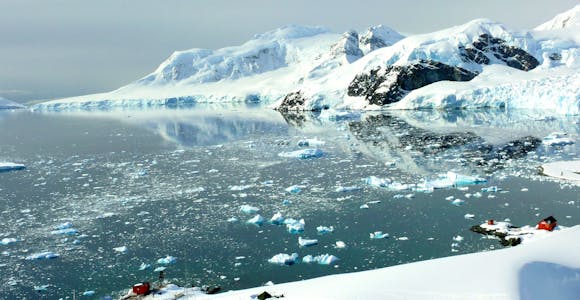
The Peninsula is the classic way to experience Antarctica. Some of the best wildlife and most dramatic scenery can be found in this part of the Frozen Continent.
Discover More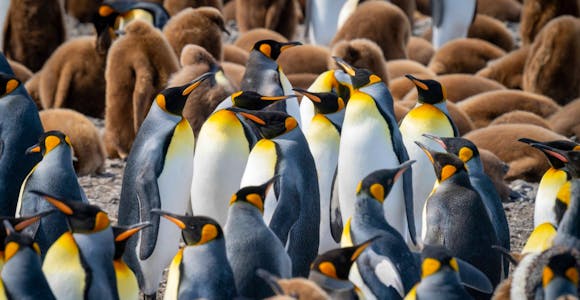
A jewel in Antarctica's crown, South Georgia is one of the world's great wildlife destinations: the Serengeti of the Southern Ocean
Discover More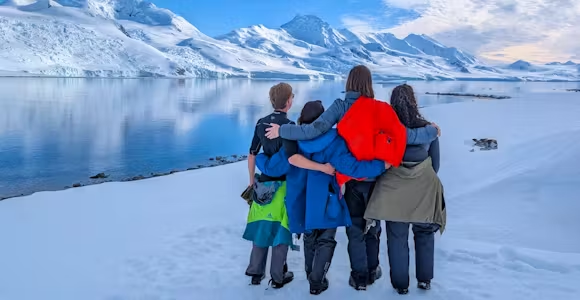
Choosing when to go to Antarctica is a key part of planning a cruise, with each month of the season offering a different side of the continent.
Discover MoreWe'll spend some time listening to your aspirations, then discuss the kind of experience that might suit you.
Next we'll discuss the options, shortlist the best trips for you and present you our impartial recommendations.
We'll place a 24 hour hold on your preferred option - without obligation - whilst we talk through the details.
With over 100 years of Antarctic experience between us, we can help guide you to exactly the right trip for you.
1 888 970 4570This website uses cookies to ensure you get the best experience on our website. Privacy policy
We don’t charge a commission and there are no hidden fees. Just impartial, expert advice from the leading Polar cruise agent. Schedule a call with our Antarctic Experts today.